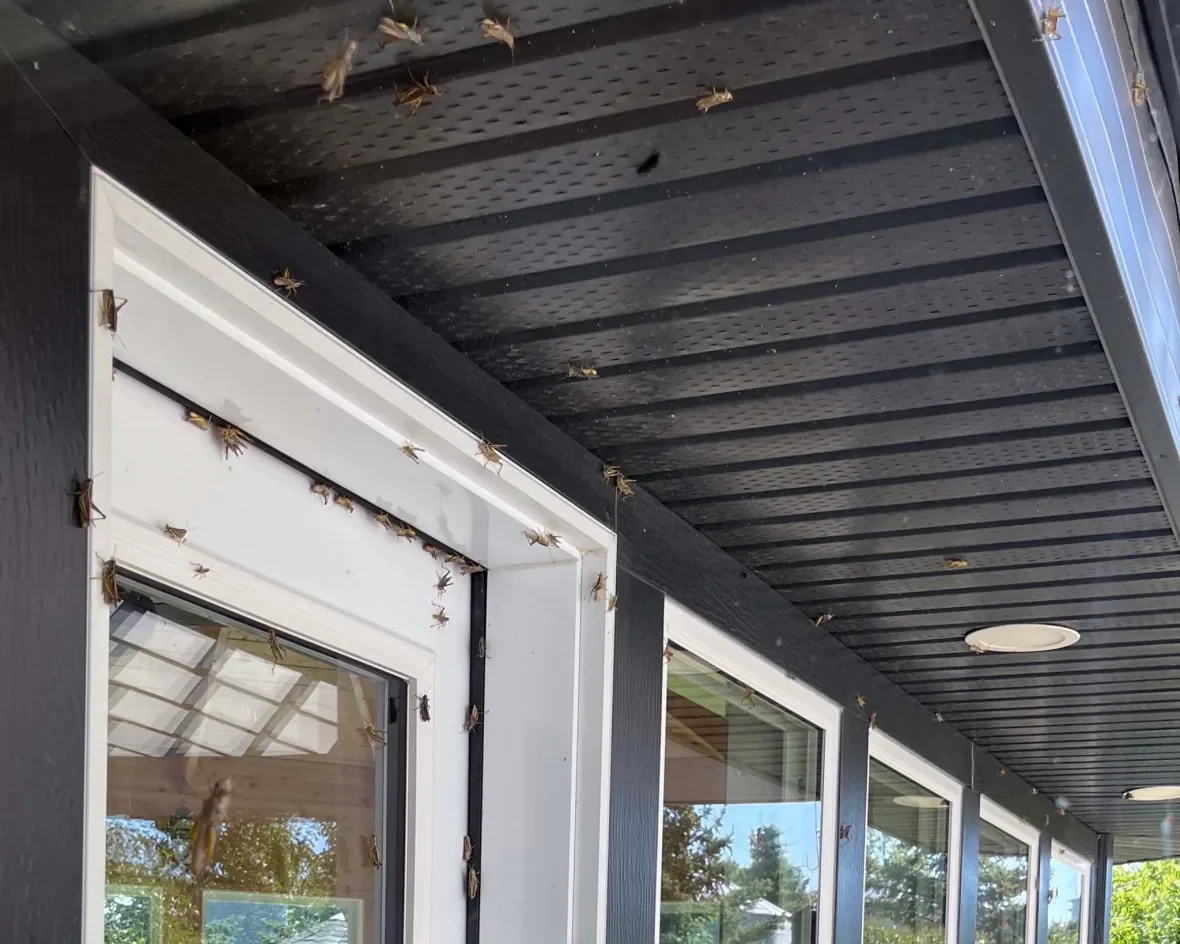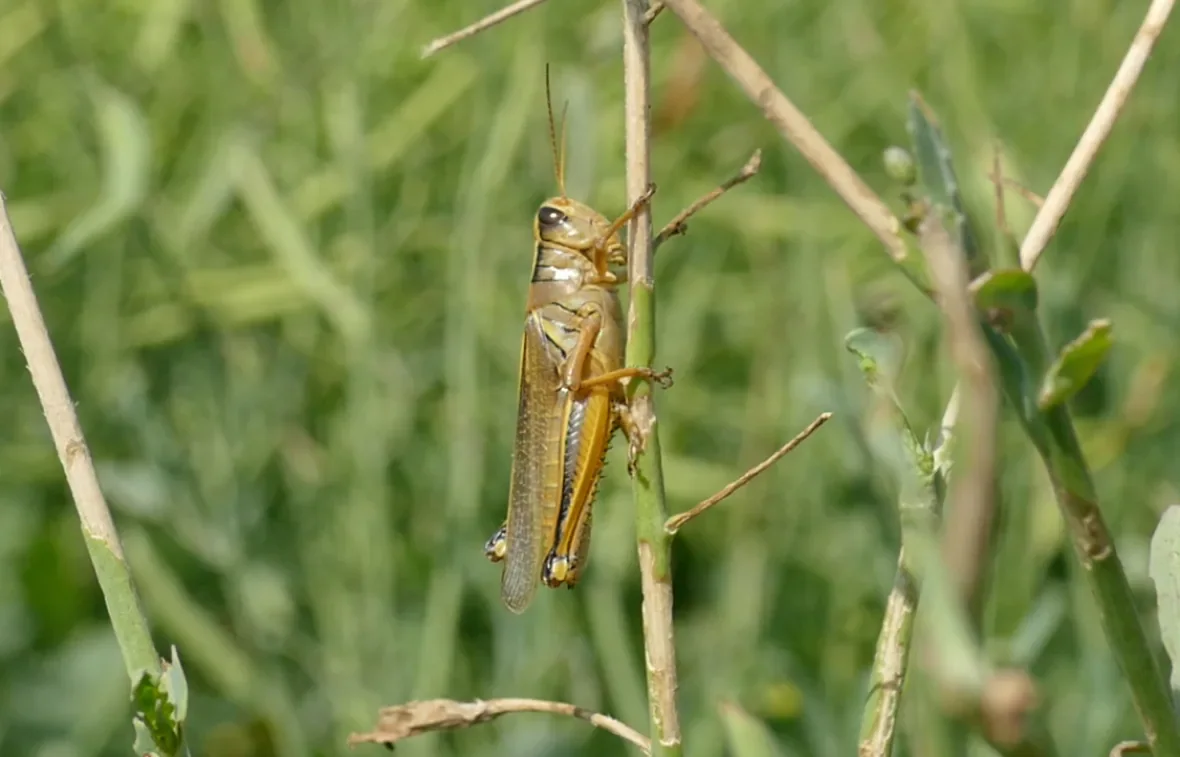
"Perfect storm" of weather fuels Saskatchewan grasshoppers
Don Fauser says he's encountered "waves" of grasshoppers on his farm near Woodrow — about 175 kilometres southwest of Regina.
"They jump on you," Fauser said. "It's miserable."
MUST READ: Buzz off! 5 things you'll need to keep wasps away from your home
He said the insects damaged his canola and durum crops, which were about ready for harvest. They've also eaten raspberry and peony plants on his deck and are clinging to the sides of his house.
His wife, Delores, even found one grasshopper in their bathtub.
He's surprised by their appetite. The insects have eaten all of the leaves off of nearby trees, and even started eating the needles on evergreens.
"But they don't bite," he joked. "If we wait [until] January they won't be around."

Grasshoppers devour a raspberry plant on Don Fauser's farm near Woodrow, Sask. (Submitted by Delores Fauser)
The Fausers aren't the only ones contending with grasshoppers. Todd Lewis, who farms near Gray — about 35 kilometres south of Regina — noticed them early in the growing season.
"We did have a significant amount of grasshopper eggs," said Lewis. "You could actually see them in the fields and around the buildings."
Lewis is also a representative for the Agricultural Producers Association of Saskatchewan. He said farms in the south that have seen little moisture this summer —particularly in the southwest — have struggled the most, and likely will until their crop is harvested.
Lewis said he's heard from producers in that area that the insects are not just in ditches around the edges of fields, but have moved inward, devouring entire crops.

Grasshoppers have taken to clinging to the side of Don and Delores Fauser's house near Woodrow, Sask. (Submitted by Delores Fauser)
Damage can range from hundreds to thousands of dollars per hectare, said Lewis.
'Perfect storm' of weather fuels grasshoppers
James Tansey, the province's entomologist, said this year has been bad for grasshoppers, particularly in southern Saskatchewan. He said last year's weather created a "perfect storm" for grasshopper growth.
"We had a nice warm spring, so that sped them through their development, so we had an early hatch" said Tansey.
"Probably most important, [Saskatchewan had] a really long, dry, protracted late summer and fall, so there was a really long period for these animals to get eggs into the ground."

Last year's weather conditions created a 'perfect storm' for grasshopper development, according to the province's entomologist. (Riley Laychuk/CBC)
The Prairie Pest Monitoring Network, which tracks insect development on the Prairies, notes that between 75 and 90 per cent of the grasshopper population in portions of the province are now in the egg stage, and those will hatch next spring.
Tansey said some grasshoppers are still nymphs — or young grasshoppers — and they will likely stay active until a hard freeze in the fall.
He warned next year's numbers could once again be significant.
"If people have grasshoppers in their region currently at significant densities, and the warm, dry weather continues, they should probably be looking forward to grasshopper populations again next year."
WATCH: Explosion of grasshoppers chomp down in Alberta
The monitoring network also counts grasshoppers at survey stations across the province. Last year, an average of 3,442 grasshoppers were counted per trap. The highest recent number was 3,763 per trap in 2016.
This year's numbers are yet to be determined.
Spraying crops is the most popular way farmers have tried to win the battle against the insects, but both Lewis and Fauser say nature will likely have to take its course by bringing colder weather.
"Eventually it kind of looks after itself ... I hope," said Fauser.
The story, written by Ethan Williams, was originally published for CBC News.








